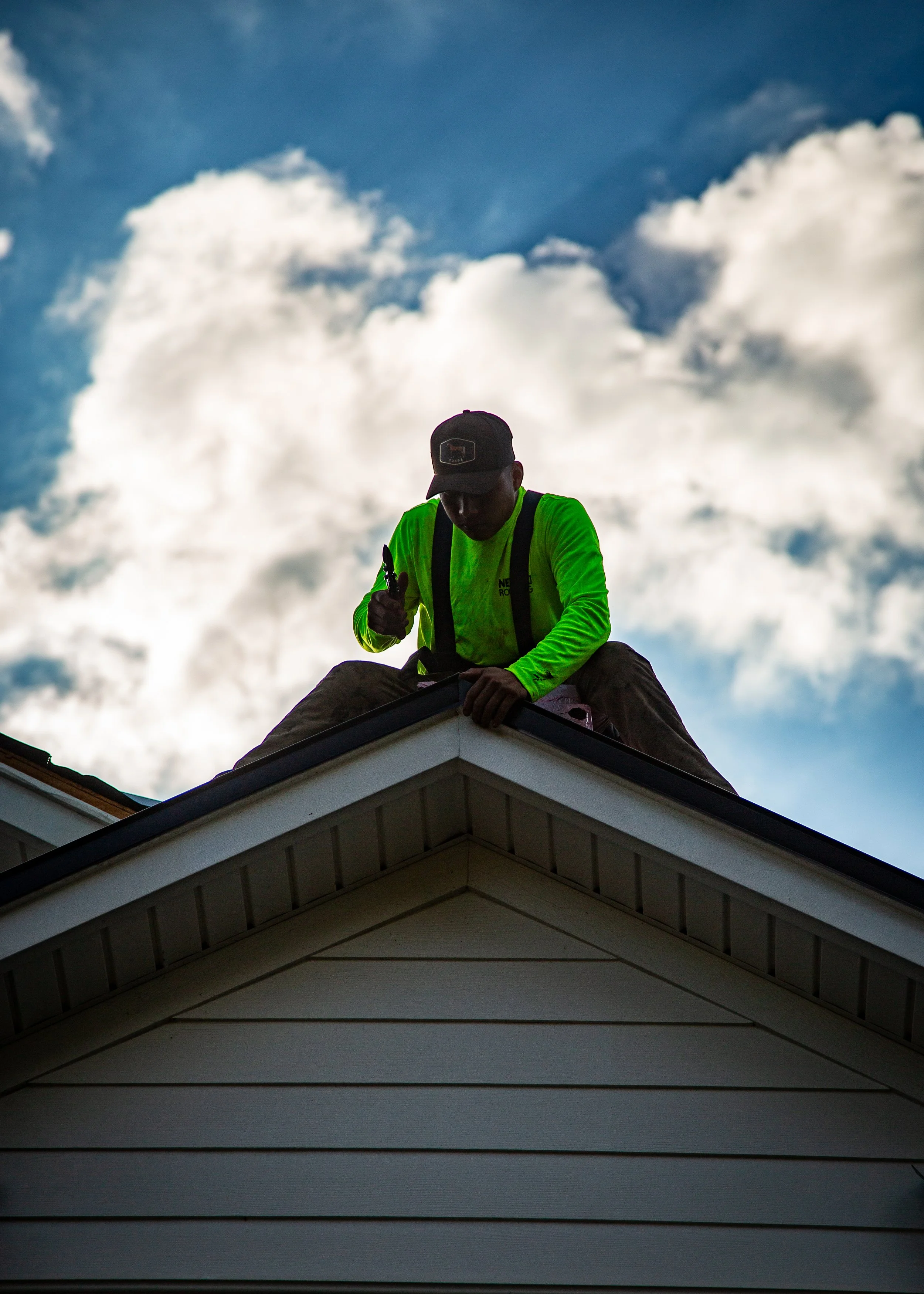Understanding the Importance of Residential Roof Repairs
The roof over your head does more than keep rain and wind out of your home. It protects you from the sun’s harsh rays, maintains your home’s indoor temperature, and increases your curb appeal. However, despite its importance, many homeowners neglect or overlook routine roof maintenance. Staying on a consistent schedule and fixing minor problems before they become major issues is crucial to saving you money and prevent serious damage to the structural integrity of your home.
Here are some tips and guidance on the basics of roof repairs or replacements and how to keep your roof in tip-top shape.
Signs of Roof Damage
Regular roof inspections on your home can help spot the signs of damage before they become a major issue. Ignoring these signs can mean expensive and lengthy repairs in the future. Some signs to keep an eye out for include:
Water stains on ceilings and walls.
Sagging roofs or other areas of your home.
Missing or broken shingles.
Excessive granule loss, seen especially in gutters.
Moss or mold growth.
Fluctuating temperatures (unable to keep the house warm in the winter or cool in the summer).
Holes or other weak areas.
Spotting these signs of damage and having them repaired early can save you hundreds, if not thousands, of dollars in the future!
DIY Fixes: So, What CAN I Fix Myself?
While we recommend using a trusted and dependable roofing contractor for major roof repairs and replacements, there may be some repairs that you can do yourself. Using the proper precautions and prioritizing safety is key and knowing the signs as to when to call in the professionals is vital. However, with a ladder and some basic tools and materials, there are a few roofing issues you may be able to repair yourself. These include:
Cleaning debris out of gutters and downspouts to allow proper water flow.
Trimming branches and other hazards away from your roof that could cause damage during a storm.
When Is It Time to Call in A Pro?
Sometimes roof damage can be more extensive and serious. This is when to call in the roofing contractor pros to come in and repair or replace your roofing system. Some signs that indicate that it’s time to make a call are:
Any leaks, especially after heavy rain.
Sagging rooflines and structural instability.
Storm damage including damage from high winds and hail.
Rot, mildew, mold, and moss growth.
Visible signs of damage including missing, creased or broken shingles.
Excessive granule loss.
To stay on top of any damage, it is suggested to have your roof inspected at least once a year. At NexGen Roofing, we offer free inspections!
How Much Do Repairs Cost?
Repairs and total roof replacements vary depending on how large the damage is, materials used, and the type of work needed. Minor repairs including small leak sealing or the replacement of a few shingles can be a couple hundred dollars. However, larger repairs including entire roof replacements can be thousands of dollars.
It is important to stay on top of roof maintenance as minor issues can become major headaches down the line. A simple repair that may cost $200 now may end up costing $2,000 or more a year later if left unresolved.
To get an estimate to determine how much a repair would cost, it is important to have a free inspection and consultation. Here at NexGen Roofing, we believe in transparency, so we offer a simple online tool that provides a quick and accurate estimate within 39 seconds!
What Are Some Common Roofing Materials?
Roofs come in all shapes and sizes, and the materials used are important for health and longevity. Materials have different repair needs and lifespans, but some common options are:
Asphalt: Asphalt is the most common and affordable (and is the easiest to repair!).
Metal: Very durable and energy efficient. Repairs can be more costly, but metal roofs tend to have a longer lifespan.
Slate: Super durable and increase curb appeal. This material requires specialized and experienced installers.
Wood: Gives a rustic look but needs more frequent upkeep.
Tile or clay: Heavy, but long-lasting. Easy to replace cracked tiles as they can be fixed individually.
Preventative Maintenance Steps
Think of your roof as you would your car. You regularly have the oil replaced or inspect your tires, so why wouldn’t you inspect your roof routinely? The best way to get the longest lifespan out of your roof is to maintain it. Some simple steps you can take include:
Have your roof inspected annually.
Routinely check your attic for signs of moisture, mold, or other structural damage.
Clean your gutters and downspouts (every 6 months is a good rule of thumb), especially before major storm seasons.
Clear any hazards such as low hanging branches and leaves from and around your roof.
How To Choose the Best Roofing Contractor
Finding a professional roofing contractor to take care of your roof is crucial. Look for licensed and insured contractors who understand your roof’s needs and the environment where you live. Ask about their warranty policies for new materials and repairs and ask for any work estimates in writing.
Don’t be afraid to look at Google Reviews and ask family and friends for recommendations. A good contractor will always be happy to answer any questions you have and should instill confidence in you that they will get the job done efficiently.

